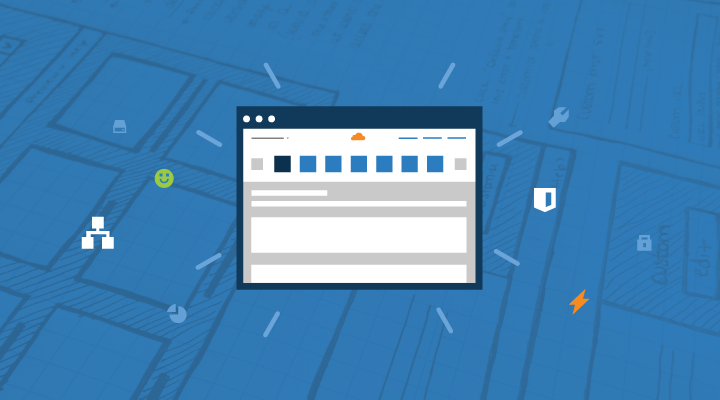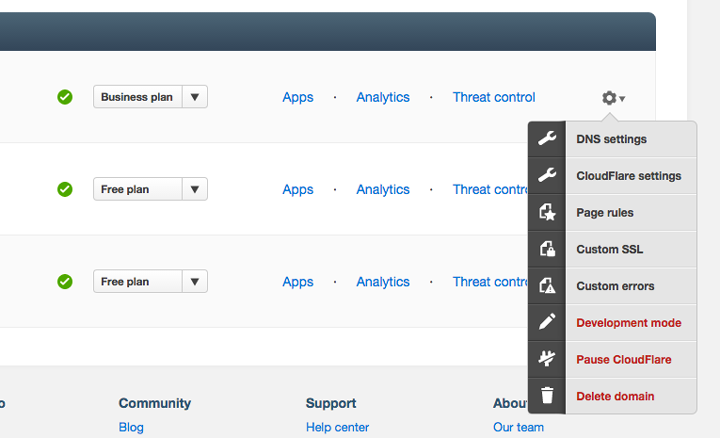Redesigning CloudFlare


CloudFlare’s original interface grew at an amazing speed. Visually, it hadn't changed much since CloudFlare’s launch in 2010. After several years of new features, settings, and ancillary UIs buried beneath clicks, it became clear that the user experience was lacking and would only get worse as we continued to add features. The question became: How could we make a UI that was versatile, scalable, and consistent?
If you haven’t yet, make sure you read Matthew’s post about the philosophy behind our new interface. This post will go into the details and the thought process behind designing our new dashboard.
Why a redesign?
We needed versatility for a growing variety of users and devices
As CloudFlare has grown, we now have a large variety of customers spanning four very different plan levels. We needed an interface that would work well for both the casual owner of a single blog, an agency managing many client sites, and enterprise customers that demand ultimate control. Also, the rise of responsive design was something we wanted to take seriously — the dashboard should be versatile enough to work just as well on every device.
We needed a platform that we could build upon

We couldn’t Continue reading
Skill Development Planning by the Dozen
I’ve been going to Cisco Live as one of the speakers for several years now. As Cisco employee, you can go to Cisco Live (for free) only if you are a speaker, or part of the World of Solutions exhibition, or if you come for the customers, or to support the network infrastructure for the event.
For the past three years at Cisco Live I’ve been sharing strategy and tips and tricks of how to become CCIE based on my own experience. My part of the session is focusing on skill development planning to achieve the objective, which is to pass CCIE lab exam. There are many technical sessions available during the event, but only very few talk about how to build learning plan and walk you through step by step of sample plan created by someone who has done it. I believe the session material can be applied outside CCIE context, and it’s relevant with my previous post, so I’m going to share it here with some updates.
Robert Grant mentioned that strategy is the means by which individuals achieve their objectives. In short, successful strategy can be achieved by having clear and consistent goal, understanding the environment Continue reading
Running Docker Machine on Rackspace Public Cloud
Next up I am giving Docker Machine on Rackspace public cloud a whirl. If you don’t have an account and want to check it out take a look at their developer+ credit. Here is a gif diagram (I’m addicted to making gifs atm, sometimes not even cats pics like here) overviewing Docker Machine. To get installed and much more on ... The post Running Docker Machine on Rackspace Public Cloud appeared first on NetworkStatic | Brent Salisbury's Blog....
Citizens of Tech 001 – Knuckle Cracking Felt Animals
I have a new podcast recommendation to share. The title is Citizens of Tech and is a product of our good friend Ethan Banks and Eric Suthphen. Although it is part of the PacketPushers ecosystem, it is a very different type of podcast. As opposed to typical network-centric topics, this show seems to include all things tech (and things that tech people are interested in).
Check out the first episode here–
The post Citizens of Tech 001 – Knuckle Cracking Felt Animals appeared first on PacketU.
Interop 2015: Product and Partnership News
 News from Cumulus, Cavium, Penguin, SanDisk, and more.
News from Cumulus, Cavium, Penguin, SanDisk, and more.

